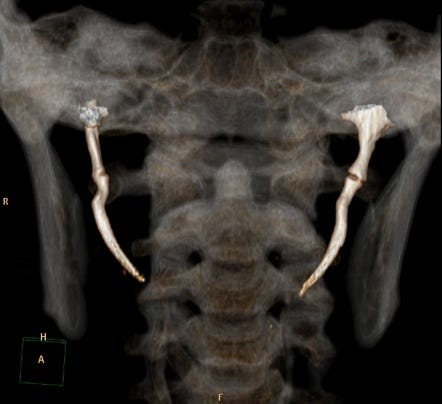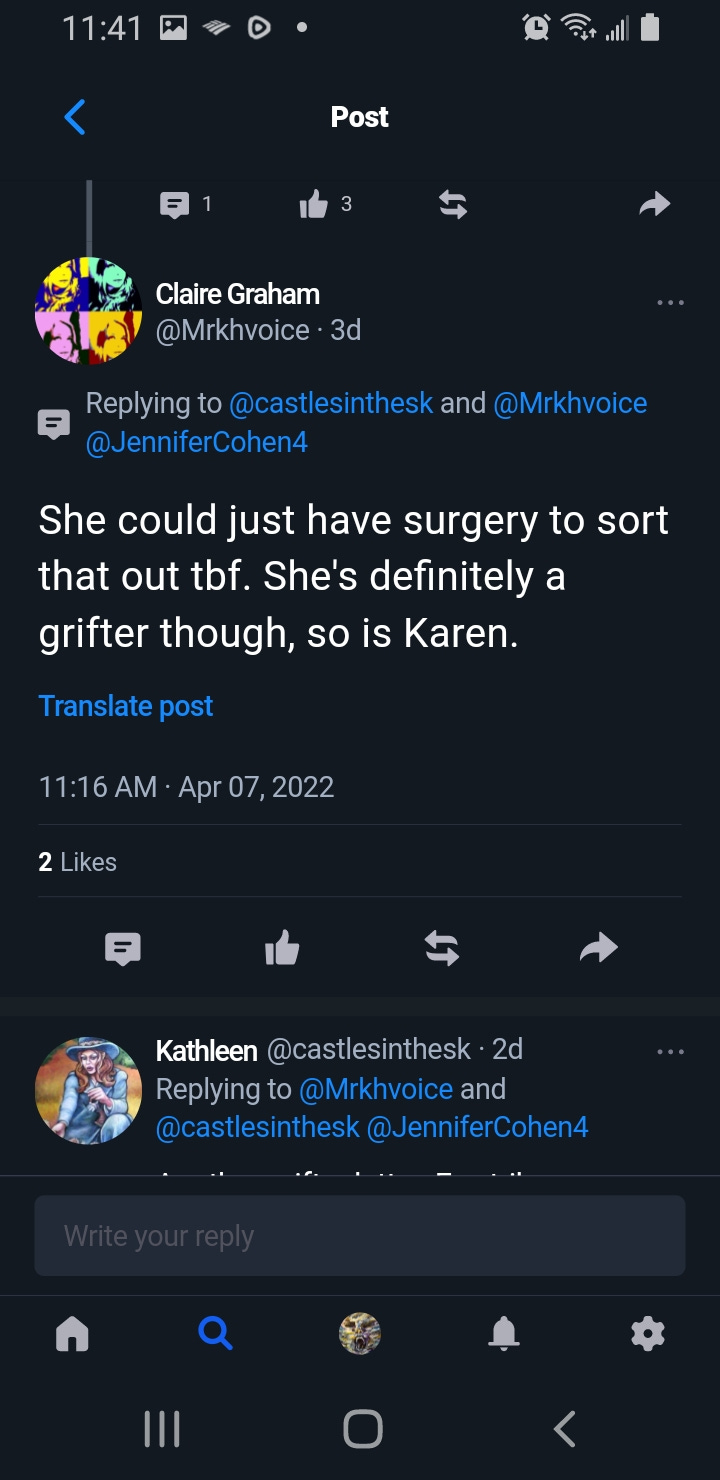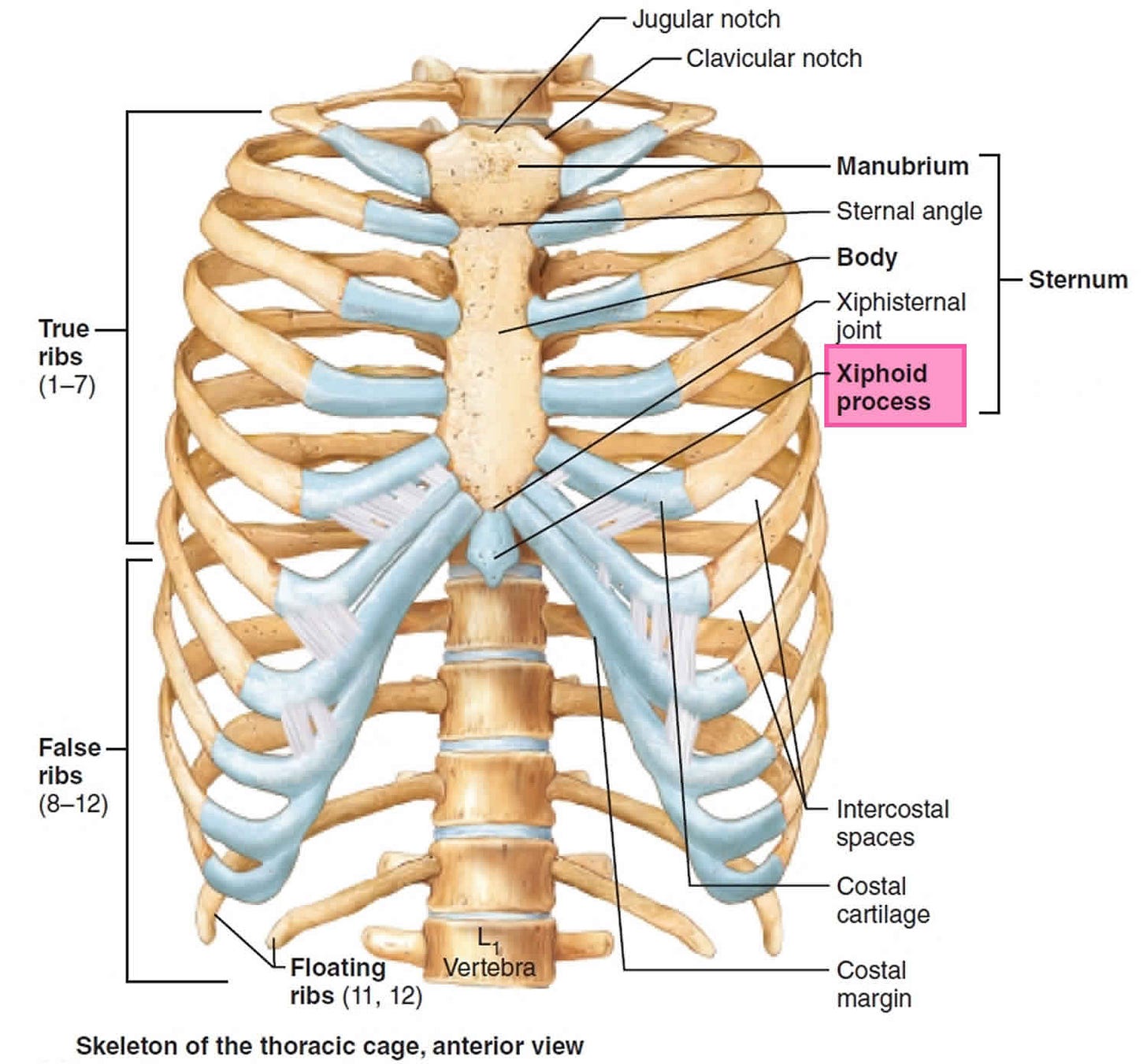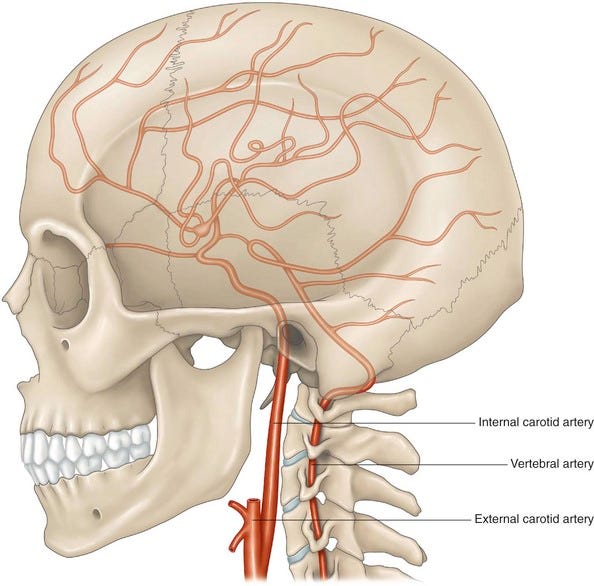If anyone is curious about my experience with Eagle syndrome, I talk about it in greater depth in the video series, Superiority Complex, available on Exulansic.com, Odysee, and Rumble. I like to raise awareness about my rare syndrome. This essay will be about why I will not be seeking a second surgery to remove the problem.
This series is also a response to Samantha Lux’s experience with a botched tracheal shave.
Superiority Complex 1:
https://rumble.com/vpzrgx-superiority-complex.html
Superiority Complex 2: Cartilage Blanche:
https://rumble.com/vq4znx-cartilage-blanche.html
Superiority Complex 3: Dad’s Carving the Turkey:
https://rumble.com/vyel1o-superiority-complex-3-dads-carving-the-turkey.html
Claire Graham of Genspect and formerly of dsdfamilies, and the rest of the Shady Bunch, are openly theorizing on Gettr that my Eagle Syndrome could “just” be treated surgically. Wow! Let me get the betadine and butter knife. I’m ready to be out of pain. What could go wrong?
The relevant synopsis, for new subscribers, is that I have a medical condition called Eagle syndrome, named by and after Dr. Watt Weems Eagle in 1937, who did not himself have the syndrome. About one in 2,500 people to two in 2,500 people have it. I am also a licensed speech pathologist. I went to school in part to acquire expertise in aspects of the long-term management of my condition, because I anticipated that I would have it long-term. I had my surgery in the middle of 2011, after I foolishly chose to delay treatment to finish my Bachelor’s, possibly sealing my fate in the process. I applied to go to SLP school in early 2012. These were still the days of Exutransic, and my tonsillar bleed following the surgery happened while my live-in trans-feminine male partner and our polyamorous trans-masculine female partner were at SF Pride together and had opted to extend their day a few hours longer than we had planned.
Eagle syndrome is caused by a bilateral skeletal malformation. It can be broadly summarized as symptomatic elongation of the styloid processes as well as a symptomatic calcification of the stylohyoid ligament. The symptoms are widespread and affected my hearing, speech, swallowing, taste, and smell. It causes acid reflux, dysmotility, dysphagia, tinnitus, lightheadedness upon standing, hyperacusis, Eustachian tube dysfunction, foreign body sensation, and of course, pain. It took a long time to determine that these worsening symptoms had a common, structural cause.
A process is a bony projection from a larger structure. Cardiopulmonary resuscitation (CPR), for instance, is applied above the level of the xiphoid process of the sternum, which is the lowest portion.
“Styloid processes” refer to two small bony projections from the skull, specifically the temporal bone of the skull, which encases the ear. These projections extend and then suspend the hyoid bone, and therefore the larynx, which then attaches to the trachea underneath. The processes are narrow and pointy and therefore they were named pen-like, or styloid.
Surgery can sometimes treat Eagle syndrome by shortening a symptomatic styloid process or removing the calcified stylohyoid ligament. The result of this intervention is that during normal function, i.e., swallowing, this pen like projection isn’t pressed into the back of my throat by the movement of the larynx, nor is the entire structure bent and scraped along the surrounding structures. In the hope of a true solution, I underwent a bilateral styloidectomy and tonsillectomy over a decade ago. The side that was removed was projecting into the back of my throat like a pitched tent, the surgeon said, once the tonsil was actually cleared. This impaired my swallow in many ways, and made it physically uncomfortable.
The partial success of the surgery signficantly improved my quality of life. At the time, I rated it as 75% improvement. One process was discovered to be inoperable because the ligament and bone had inflamed and scarred to the adjacent artery. Inflamed tissue that stretches, scars. A normal person swallows about once per minute, when awake, or 500-700 times per day. I had been swallowing hundreds of times per day for 24 years. That’s a lot of regular, low-grade inflammation - pharynx sous vide.
Removing a structure scarred to the artery risks damaging the artery. It is dangerous to cut arteries or alter their supporting structures, which in my case includes this scar tissue-bone-ligament complex. Arteries are under continuous pressure, like a firehose that’s in use. The purpose of a blood pressure cuff (sphygmomanometer) is to compress the artery, which takes quite a bit of force, because the artery is pressurized, so that the pressure when the heart is relaxed and contracted can be measured. A vein is not pressurized, with one exception (pulmonary vein, which feeds the lungs from the heart), and therefore compresses more easily. The pressurization allows the heart to push blood through single-file capillaries that feed the tissue itself.
Any damage to the wall of an artery may cause it to fail to contain this pressure, now or in the future, during a period of acute stress or physical exertion, possibly after other age-related tissue changes have occurred as well. The pressure ought to be as evenly distributed as possible, like a inverse submarine, or a party balloon. A small area of damage, which could be damage from plaque in the artery from long-term heart disease, may create a local force differential from scarring-related changes to tissue density and elasticity. This could tear in a moment of sudden blood pressure change, such as standing up, or running from danger. This may lead to an immediate or delayed hemorrhagic stroke.
Here is the internal carotid artery, which supplies the brain and eyes, in relation to the styloid process, the small jutting bony bit near the ear hole. The styloid process ends in a point between the jaw and the spine. Ligaments and muscles connect the hyoid bone to the styloid processes on either side.
This is what the difference is between an elongated and a non-elongated styloid process. Most styloid processes (96%) are, by definition, not elongated. Most elongated styloid processes (96%) are asymptomatic. Elongation was defined as exceeding one inch, or 2.5 centimeters. Mine were/are over 4 centimeters.
Going into the first surgery, we were not aware of any elevated risk of carotid dissection. A second surgery would mean operating twice on the same area, creating more scar tissue in this very busy, delicate, and mobile portion of my body. I would be knowingly exposing myself to this elevated risk of dissection, for a much lower potential return on investment (the first surgery really helped!), and a very good chance I will wake up to hear that the surgeon decided again that it was not worth it to attempt to fix. It would probably cost tens of thousands of dollars and require weeks of painful recovery, in the best case scenario.
The first surgery required rehospitalization following a tonsillar bleed 2 weeks into recovery. The wound from the surgery had created a scab that had torn off, causing the large wound underneath in the back of my throat, where they had removed my tonsils, to access the styloid process, to begin to bleed. The experience was terrifying. I was alone at the time. I suddenly began spitting a lot of blood continuously into a bucket as if I had been stabbed. I was glad I had been adequately prepared to recognize that it was most likely not a carotid bleed due to the color of the blood and the fact that it was not spurting (and the fact that several minutes had passed and I was still conscious). I was 24. I was only reasonably confident in my asssessment as I waited for my ride to the ER. The next time, I might not be so lucky.
If I were to follow Claire’s ignorant, incompetent, and non-expert treatment recommendation, I would be risking waking up blind or mute from an internal carotid stroke. Or that could randomly happen 5 years later when I’m out with BAE somewhere, traumatizing whoever is around. My quality of life has a currently tolerable glass ceiling. Yes, I am in pain. Yes I would struggle to eat certain foods if I kept attempting to eat those textures unmodified. It has been and could be worse. Treating the other malformation might kill me or render me profoundly disabled with minimal quality of life. The surgeon made the right call.
Roger Ebert survived a carotid artery bleed. His carotid artery burst following a surgery for cancer. Because the surgery was to treat a malignancy, the surgeon perhaps took more risks than mine did, in attempting to remove the cancer. His bleed led to the death of several structures including his jaw. Here is what he looked like before and after. WARNING: SHOCKING.
BEFORE:
AFTER:
I suspect a dissection for me would have led to more brain than facial involvement (internal versus external branch), but I was not awake when the surgeon was visualizing the field. We are talking about a structure that did not develop properly. Anatomical drawings are not a reliable guide to what my specific structures look like and therefore to what extent it would be possible to safely modify them with a sharpened piece of metal, some wire, and his gloved hands. We are talking about my neck, a very crowded and significant area that moves constantly.
I am glad Claire Graham and the rest of the CAIS cadets have finally found common ground with me in agreeing that it is acceptable to voice opinions on syndromes you do not yourself have. Not being an expert does not mean you must be silent. Not having a syndrome does not require one to automatically defer. I have not mistaken these foolish musings for a serious clinical recommendation nor do I expect her Gettr posts to impact the field of head and neck surgery. I support her right to be so incredibly wrong, so publicly. I have no plans to doxx her over it or file 100 ethics complaints citing all the children with Eagle syndrome who saw her Gettr posts and started wailing about their inoperable status. I won’t tell anyone to get the pitchforks on the theory doctors will start forcing patients like me to follow her surgical plan, simply because she was wrong on the internet and someone saw.
Last note: I moved to Updog in the emotional sense. To answer your predictable question, Updog is a state of mind. The longer they don’t get the joke, the funnier it will become.











Grifter?!?? You and Karen?? Wow. You two, and Kelli Jean are gifts to Humanity. These people are strangers to Reason. Thanks for all you do.
Exulansic. You're way too witty and intelligent for your own good. Claire Graham and that crew only know how to bully with zero finesse and that's why they had to do what they did .